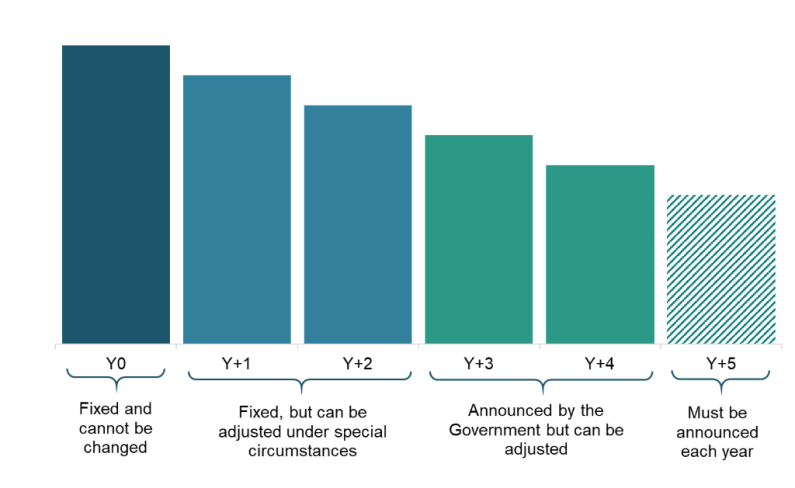The Climate Change Commission makes recommendations on NZ ETS unit limits and price control settings to the Minister every year. The Minister must publicly consult on updates to settings and consider the Commission's recommendations.
The unit limits that must be prescribed in regulations are:
- a limit on the total number of NZUs available by auction. This is comprised of annual auction volume plus the volume available within the cost containment reserve (CCR) and is shown in the table below
- a limit on approved overseas units; which, as New Zealand currently has no access to offshore mitigation, is zero
- an overall limit on units. It consists of units available by auction, by other means (e.g. from industrial allocation) and approved overseas units. This excludes consideration of units transferred for removal activities
If the Minister recommends unit limits and price control settings that differ from the Climate Change Commission’s recommendations, the Minister must publicly explain why.
